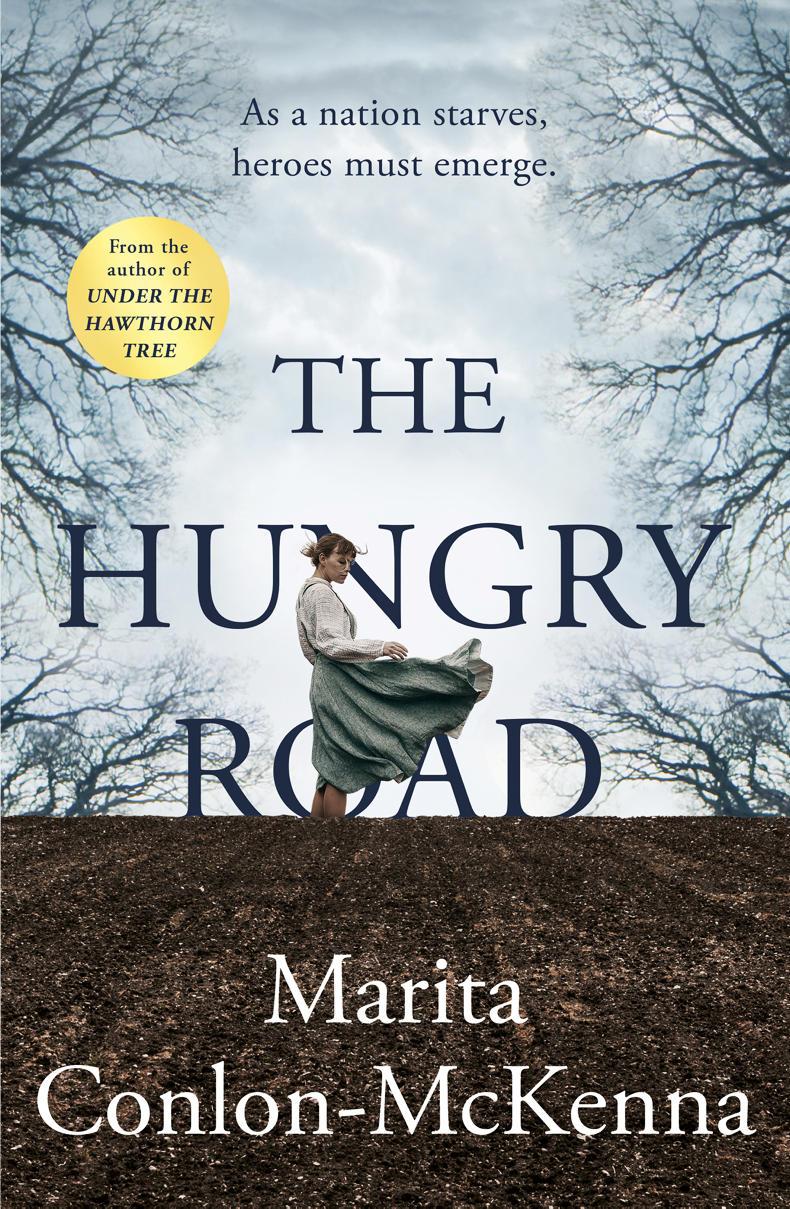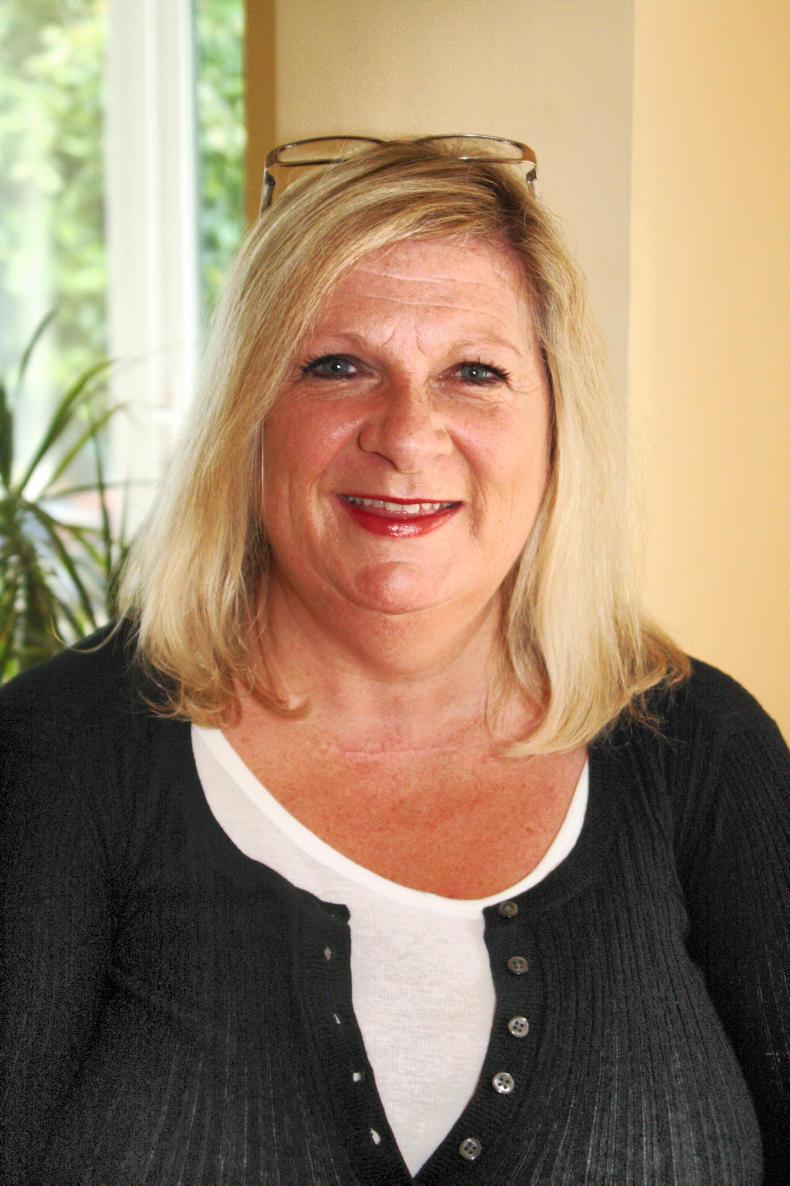Countless children and adults alike grew up reading Marita Conlon-McKenna’s Under the Hawthorn Tree. Coming up to the 30th anniversary of the release of this classic, Marita has written her second book based on the famine entitled The Hungry Road and this time it’s a book for adults.
Ever before Marita puts pen to paper, an enormous amount of work goes into research for her books.
Hopefully I’ve managed to write a book that gives them their due
This is because of her desire to find out about her characters’ lives and to be as true as possible to them. The majority of the characters in The Hungry Road were real people.
“Hopefully I’ve managed to write a book that gives them their due and that shows the value of what they did, so that more people will know the story about the famine.”
Marita made great use of the Famine Heritage Centre in Skibbereen. She is from Dublin and lives there still, but has family in west Cork.
“They were so helpful. They had records of the time that I could read about meetings held in the courthouse, so that was invaluable.”
Strong characters
One of the real life families that Marita wrote about in The Hungry Road were the Sullivan’s 
who were evicted. Mary Sullivan was the matriarch of that family.
“She’s an incredible character, much like most Irish mothers who fought for their children and who would do anything to keep her babies alive.”
Marita would be similar to Mary Sullivan in that respect and through her research she has found out plenty about herself.
“I have learned that I am actually quite tenacious, I keep going.”
Her mother’s advice has stayed with her throughout.
“She used to always say, ‘Eat the elephant bit by bit’ and actually, it has stuck with me because sometimes when you’re doing a big book it’s such a massive thing and you’re thinking ‘Why did I even start this?’
“I have to eat my elephant. That’s my attitude to everything because sometimes you think you’ve taken on too big of a thing and you have to break it up into pieces.”
I wanted to get across that the heroism of Irish people
One thing Marita wants to make clear in the book is that people affected by the famine put up a fight against it. She wants their strength to be known to the world.
“I wanted to get across that the heroism of Irish people has been totally underestimated as far as I’m concerned. The famine was like this ghost that came across and swept the country.
“I really wanted to show the fight back. The people of Skibberreen fought for their people.”
A desire to write
Like all children, Marita used her imagination for play. While out playing many chose to be cowboys or Indians, but Marita liked to act out scenes from history.
“I’d be in the garden pretending that I was a gladiator in Rome or that I was Robin Hood in Sherwood Forest. I played history in my mind and physically in the garden. I have always loved history.”
As a child, Marita was an avid reader and easily separated the good from the bad.
“I remember looking at book and saying, 'That’s a brilliant book I wish I’d written that one'. As a child, you would read a lot of bad books too and think, ‘Why would anyone write that boring story?’
“In school I had always been fascinated by the Irish famine. One of my teachers, Sister Ewing – a nun from Scotland – said I told her when I was 12 that I was going to write a book about the famine.”
I was always writing stories and sending stories into the papers and magazines
Marita started writing while still in primary school filling pages of notepads with stories.
“I remember even writing a play and my class putting it on when I was only in primary school.
“I was always writing stories and sending stories into the papers and magazines, some of them got published. After I left school, I did a bit of freelance journalism for different newspapers and magazines.”
Under the Hawthorn Tree
May of this year will mark the 30 year anniversary of the release of Under the Hawthorn Tree. The book has proven to be as popular as ever. It was in the top 20 books borrowed from Irish public libraries in 2018 and it was the only Irish children’s book to feature too.
When I had children I started doing picture books for my daughter because I always loved drawing and art in school
Marita did a night course in children’s literature in University College Dublin (UCD) and also studied Anglo-Irish literature and women and social change and women in history.
“All of these things were half leading to what I wanted to do. When I had children I started doing picture books for my daughter because I always loved drawing and art in school.”
Her lecturer at the time showed one to a publisher and she arranged for them to meet.
“My older girl was a wee bit jealous saying, ‘Oh you have all these books for Laura and no book for me’. I had to write a book for Mandy, so I wrote Under the Hawthorn Tree with no intention of publishing it because I thought no one would be interested.”
The Hungry Road is out now. The play Under the Hawthorn Tree based on the book of the same name will be touring Ireland in January and February. For more information on the play click here.
Read more
Marita Conlon McKenna - Rebel Sisters
Cathy Kelly: the hen whisperer
Countless children and adults alike grew up reading Marita Conlon-McKenna’s Under the Hawthorn Tree. Coming up to the 30th anniversary of the release of this classic, Marita has written her second book based on the famine entitled The Hungry Road and this time it’s a book for adults.
Ever before Marita puts pen to paper, an enormous amount of work goes into research for her books.
Hopefully I’ve managed to write a book that gives them their due
This is because of her desire to find out about her characters’ lives and to be as true as possible to them. The majority of the characters in The Hungry Road were real people.
“Hopefully I’ve managed to write a book that gives them their due and that shows the value of what they did, so that more people will know the story about the famine.”
Marita made great use of the Famine Heritage Centre in Skibbereen. She is from Dublin and lives there still, but has family in west Cork.
“They were so helpful. They had records of the time that I could read about meetings held in the courthouse, so that was invaluable.”
Strong characters
One of the real life families that Marita wrote about in The Hungry Road were the Sullivan’s 
who were evicted. Mary Sullivan was the matriarch of that family.
“She’s an incredible character, much like most Irish mothers who fought for their children and who would do anything to keep her babies alive.”
Marita would be similar to Mary Sullivan in that respect and through her research she has found out plenty about herself.
“I have learned that I am actually quite tenacious, I keep going.”
Her mother’s advice has stayed with her throughout.
“She used to always say, ‘Eat the elephant bit by bit’ and actually, it has stuck with me because sometimes when you’re doing a big book it’s such a massive thing and you’re thinking ‘Why did I even start this?’
“I have to eat my elephant. That’s my attitude to everything because sometimes you think you’ve taken on too big of a thing and you have to break it up into pieces.”
I wanted to get across that the heroism of Irish people
One thing Marita wants to make clear in the book is that people affected by the famine put up a fight against it. She wants their strength to be known to the world.
“I wanted to get across that the heroism of Irish people has been totally underestimated as far as I’m concerned. The famine was like this ghost that came across and swept the country.
“I really wanted to show the fight back. The people of Skibberreen fought for their people.”
A desire to write
Like all children, Marita used her imagination for play. While out playing many chose to be cowboys or Indians, but Marita liked to act out scenes from history.
“I’d be in the garden pretending that I was a gladiator in Rome or that I was Robin Hood in Sherwood Forest. I played history in my mind and physically in the garden. I have always loved history.”
As a child, Marita was an avid reader and easily separated the good from the bad.
“I remember looking at book and saying, 'That’s a brilliant book I wish I’d written that one'. As a child, you would read a lot of bad books too and think, ‘Why would anyone write that boring story?’
“In school I had always been fascinated by the Irish famine. One of my teachers, Sister Ewing – a nun from Scotland – said I told her when I was 12 that I was going to write a book about the famine.”
I was always writing stories and sending stories into the papers and magazines
Marita started writing while still in primary school filling pages of notepads with stories.
“I remember even writing a play and my class putting it on when I was only in primary school.
“I was always writing stories and sending stories into the papers and magazines, some of them got published. After I left school, I did a bit of freelance journalism for different newspapers and magazines.”
Under the Hawthorn Tree
May of this year will mark the 30 year anniversary of the release of Under the Hawthorn Tree. The book has proven to be as popular as ever. It was in the top 20 books borrowed from Irish public libraries in 2018 and it was the only Irish children’s book to feature too.
When I had children I started doing picture books for my daughter because I always loved drawing and art in school
Marita did a night course in children’s literature in University College Dublin (UCD) and also studied Anglo-Irish literature and women and social change and women in history.
“All of these things were half leading to what I wanted to do. When I had children I started doing picture books for my daughter because I always loved drawing and art in school.”
Her lecturer at the time showed one to a publisher and she arranged for them to meet.
“My older girl was a wee bit jealous saying, ‘Oh you have all these books for Laura and no book for me’. I had to write a book for Mandy, so I wrote Under the Hawthorn Tree with no intention of publishing it because I thought no one would be interested.”
The Hungry Road is out now. The play Under the Hawthorn Tree based on the book of the same name will be touring Ireland in January and February. For more information on the play click here.
Read more
Marita Conlon McKenna - Rebel Sisters
Cathy Kelly: the hen whisperer







 This is a subscriber-only article
This is a subscriber-only article










SHARING OPTIONS: